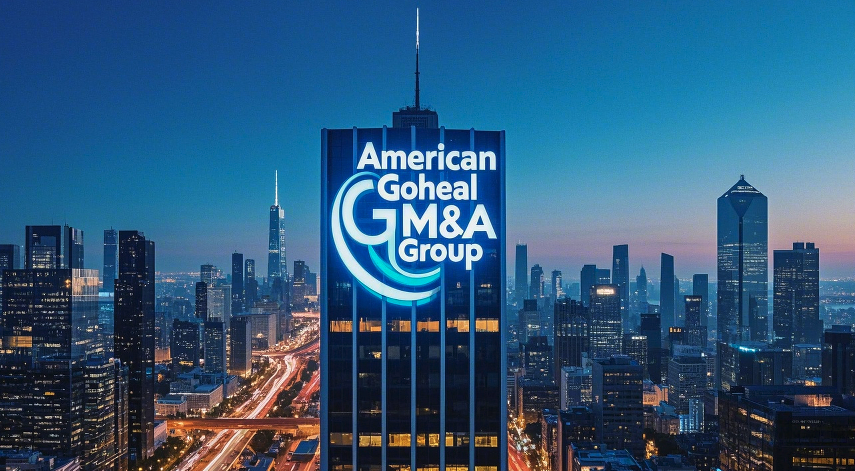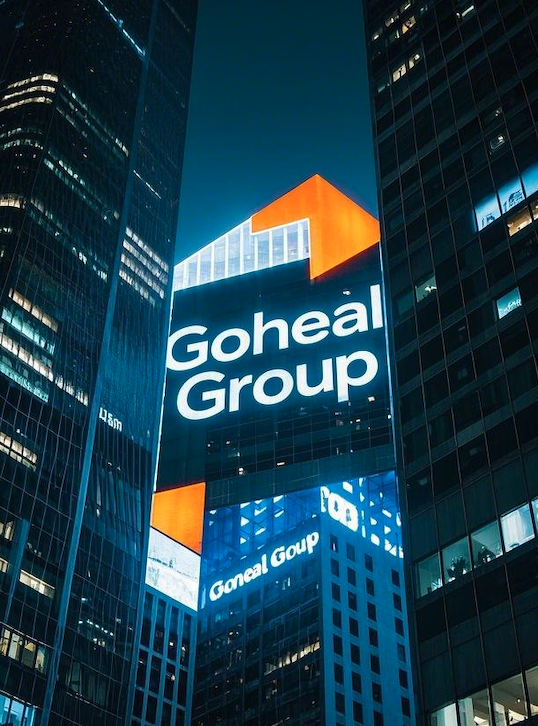"The general trend of the world is that after a long period of division, there will be unity, and after a long period of unity, there will be division." The mergers and acquisitions of listed companies, as this ancient saying goes, have experienced the peak of wild expansion and are now gradually moving towards a new era of refined integration. From the previous capital frenzy to the current strategic upgrade, the rules of the market have changed, the players' playing methods have changed, and only companies that truly understand capital operations can gain a foothold in this transformation.

American Goheal M&A Group
Goheal has long been paying attention to the global M&A trends, witnessed the changes in this market from "extensive expansion" to "precise integration", and is well aware of the opportunities and challenges faced by listed companies in the process of mergers and acquisitions.
Capital Arena: From Wild Growth to Refined Integration
Looking back on the past decade, the mergers and acquisitions of listed companies were once the hottest topic in the capital market. Especially in the A-share market, many companies have told "growth myths" through mergers and acquisitions, and the capital market has also had great imagination for "snake swallowing elephant"-style mergers and acquisitions. However, with the tightening of supervision and the maturity of the market, the "wild growth" model that relies solely on capital operation has begun to fail, and companies are increasingly aware that what really determines the success or failure of mergers and acquisitions is not the acquisition itself, but the integration capabilities after the acquisition.
The past M&A market was full of "getting rich overnight" dramas. Some listed companies made their financial statements look more glamorous in the short term through high-premium acquisitions, but ignored the complexity of corporate integration, which ultimately led to the failure of mergers and acquisitions, the collapse of goodwill, and even the direct collapse of the company. The sequelae of wild expansion have made the capital market both full of expectations and vigilance for the word "mergers and acquisitions". Today's market has changed, regulatory policies are more stringent, and investors are more rational. Mergers and acquisitions have changed from the past "quantity competition" to "quality competition". The market is no longer looking forward to a simple "buy, buy, buy", but how to achieve real synergy after mergers and acquisitions.
The key to mergers and acquisitions: it is better to integrate well than to buy well
The core logic of mergers and acquisitions has changed from "what can be bought" to "what can be integrated". This also means that corporate mergers and acquisitions are no longer just financial transactions, but a key means of strategic layout. Goheal has found in many years of practice that successful mergers and acquisitions do not just stop at the moment of signing, but run through the integration process after the acquisition.
So, what key factors should listed companies pay attention to during the merger and integration process?
First, cultural integration is an invisible killer. Many companies only focus on business and financial matching when acquiring companies, but ignore the integration of corporate culture. After the merger and acquisition, if the management style and corporate culture of both parties are incompatible, it is likely to cause internal conflicts and slow down the integration process. Some cross-border mergers and acquisitions have led to management changes and core team losses due to cultural conflicts, which ultimately affected the long-term value of mergers and acquisitions.
Secondly, business synergy is the key value point. A successful merger and acquisition must be able to make 1+1>2, not just a financial "number game". Are the businesses of the two parties to the merger and acquisition complementary? Can market channels be shared? Can the supply chain be optimized? These are all issues that companies must consider before mergers and acquisitions. Goheal has helped many companies establish integration plans after mergers and acquisitions to ensure that the acquired companies can truly integrate into the listed company system, rather than becoming an isolated business unit.
In addition, financial risk control is the bottom line. In the past few years, there have been many cases where goodwill impairment has led to the collapse of listed companies. The root cause of this problem is that some companies "overestimated themselves and underestimated risks" when acquiring companies. If high-premium acquisitions cannot bring actual profit growth, they will eventually become a burden on the books. Today, the market pays more attention to the return on investment (ROI) of companies' mergers and acquisitions, and companies also need to conduct more detailed financial calculations before mergers and acquisitions to ensure that the assets after mergers and acquisitions can truly bring long-term value.
From "buying shells" to "empowerment": the new logic of mergers and acquisitions
In the past A-share market, mergers and acquisitions were once an important means for companies to expand rapidly and increase valuations, and there was even a wave of "buying shells to go public". However, with the tightening of supervision, the simple shell resource transactions have gradually receded, and the logic of mergers and acquisitions has also undergone profound changes. Companies are no longer just pursuing listing qualifications, but are more concerned about how to create value after mergers and acquisitions.
Under this trend, Goheal found that more and more companies are beginning to regard mergers and acquisitions as a means of empowerment rather than simple capital operations. For example, some Internet companies have successfully opened up online and offline channels and achieved full industrial chain integration by acquiring traditional manufacturing companies; some new energy companies have accelerated innovation and iteration and improved market competitiveness by acquiring technology research and development companies. This M&A method with industrial logic as the core is becoming a new trend in the market.
In the future, the merger and reorganization of listed companies will pay more attention to strategic synergy, not just financial "jigsaw puzzles". Changes in the regulatory environment have also pushed the market to be more rational. The era of blind mergers and acquisitions has passed. The merger and acquisition cases that can truly enhance the core competitiveness of enterprises are the most popular stories in the capital market.
Conclusion: The essence of mergers and acquisitions is an investment in the future
M&A is not the end, but the starting point for enterprises to move towards higher-dimensional competition. From the wild growth in the past to the refined integration today, the capital market is undergoing a profound change. How can listed companies truly achieve industrial synergy after mergers and acquisitions? How to avoid "digital games" and create real business value? This is a question that every entrepreneur and investor needs to think about.
Do you think that the future M&A market will usher in a new round of boom, or continue to develop rationally? How can enterprises stand out in mergers and acquisitions? Welcome to leave a message in the comment area to discuss, let us explore the future trends of the capital market together!

Goheal Group
[About Goheal] Goheal is a leading investment holding company focusing on global mergers and acquisitions. It has deep roots in the three core business areas of acquisition of controlling rights of listed companies, mergers and acquisitions of listed companies, and capital operations of listed companies. With its profound professional strength and rich experience, it provides companies with full life cycle services from mergers and acquisitions to restructuring and capital operations, aiming to maximize corporate value and achieve long-term benefit growth.